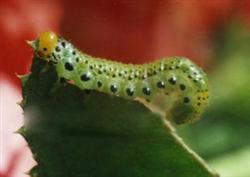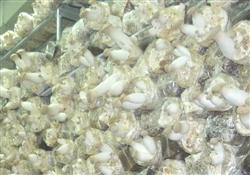Preparation of mushroom bag of Pleurotus eryngii

Pleurotus eryngii is a kind of high-grade edible mushroom, and its production benefit is ideal. In recent years, it has attracted many mushroom farmers to join the ranks of planting Pleurotus eryngii. However, many mushroom farmers' calls and letters reflect that they have little knowledge of the high-yield cultivation techniques of Pleurotus eryngii. For this reason, this newspaper has organized this special edition of Pleurotus eryngii cultivation, hoping to be helpful to everyone. 1. The basic raw and auxiliary materials Pleurotus eryngii belong to wood rot fungi, which prefer hard matrix materials. Generally, cottonseed shell is the main material, or broadleaf sawdust is used in general production. In recent years, due to the excessive increase in the price of cottonseed hull, mushroom farmers in some areas use straw materials such as corncob as a substitute, and the effect is OK. The excipients are mainly organic materials such as wheat bran and rice bran, some inorganic materials are added appropriately, and three-dimensional essence is used to supplement trace elements, the production effect is very good. Second, the production of material bags. Basic recipe. Formula 1: 200 kg of cottonseed hull, 30 kg of sawdust, 20 kg of wheat bran, 2 kg of bean cake, 3 kg of lime powder, 2 kg of compound fertilizer, 2 kg of gypsum powder, 120 grams of three-dimensional nutritional essence of edible fungi (mixing type). Formula 2: 160 kg of sawdust, 40 kg of cottonseed hull, 30 kg of wheat bran, 20 kg of corn meal, 4 kg of bean cake, 4 kg of lime powder, 3 kg of gypsum powder, 3 kg of compound fertilizer, 120 grams of three-dimensional nutritional essence (mixed type) of edible fungi. When using sawdust raw materials, they should be stuffed after mixing, ranging from a few hours to about 3 days, so that they can absorb water and soften. two。 Bagging the base material. Generally speaking, it is appropriate to have a flat width of 16cm and 20cm, with about 40000g of dry material in each bag. The bottom bag can be selected when one end of the mushroom is produced, and the polypropylene tube can be cut off when the mushroom is produced at both ends. The mouth of the bag can be covered with plastic collar, cotton plug or direct piercing. The loading should be uniform, loose and tight, and should not be different, otherwise the mycelium in the loose place is easy to break, and the side wall mushroom is easy to occur, and the permeability is not good in the tight place, so it is easy to cause uneven bacteria and uneven mushroom production, and it is difficult to manage them uniformly. It is recommended that the bagging machine should be operated by a special person to facilitate mastery. Another advantage of using the bagging machine for operation is that the work efficiency is high, and the operation can be completed in a relatively short time, so that the sterilization process can be entered as soon as possible, and the material bag can not be sterilized under the condition of high temperature for a long time, resulting in base material rancidity, delay in production and waste. 3. Sterilization. The best way is high-pressure sterilization, or high-pressure steam atmospheric pressure sterilization, but most producers do not have this kind of equipment, so atmospheric pressure sterilization can be used in production, and the general material bag can be kept for 6 hours after reaching 100 ℃. If it is not a flow operation, it can be kept for one night and the sterilization effect is better. Third, inoculate germs 1. Vaccination operation. When the material bag is cooled below 30 ℃, it is moved into the inoculation room, and the inoculation can be carried out after 40 minutes of drug fumigation and sterilization. Generally speaking, about 15 bags of bacteria can be received per 500 ml bottle or 750 ml bottle, and about 30 bags can be inoculated with a single end of the bottom bag; the bacteria can be connected in blocks as far as possible to reduce the fragmentation of bacteria, so as to accelerate germination and let the mycelium cover the material surface as soon as possible. minimize pollution and improve the success rate of bacteria generation. At present, the inoculation purification machine is generally used for inoculation operation, and the inoculation can be carried out 10 minutes after turning on, abolishing the traditional practice of drug fumigation, reducing the production cost, and putting an end to the harm and residue of drugs to the human body. and greatly improve the efficiency of the inoculation operation. two。 Germ management. Before the opening of the culture room (shed), strict eliminate virus work should be carried out. Generally, Baixian and Sebe09 can be sprayed once respectively and sealed for 2 days. Doors, windows and vents are encapsulated with anti-insect nets to prevent insects from entering. After the inoculated bacterial bag is moved into the culture rack, it should not be too high, especially when the temperature is high, we should strictly prevent the bacterial bag from producing heat during the germicidal period; the room temperature (shed) should be watered on the ground, walls and space spraying to reduce the room temperature as much as possible, and the room temperature should be raised and maintained stable as far as possible in winter. Generally, the temperature should be controlled in the range of 15 ℃ ~ 30 ℃, with the best 25 ℃. The humidity is about 70% and there is a small amount of ventilation. Although the mycelium of Pleurotus eryngii can tolerate higher concentration of carbon dioxide, it is still beneficial to the development of mycelium with fresh air. In addition, the closed culture room (shed) causes bacteria to grow in the bag under dark conditions, which is not only the physiological requirement of the mycelium, but also one of the effective measures to prevent the entry of pests. Usually about 40 days, the mycelium can be filled with the whole bag. 3. After ripening culture. After the bacterial bag is full, the temperature should be lowered as much as possible, and the mycelial culture period can be maintained for about 15 days, which can achieve the post-ripening of mycelium and lay a good material foundation for mushroom production.
- Prev

What if there are insect pests on roses?
The common pests that harm roses are leaf-cutting wasp, stem-leaf wasp, rose night moth, blow cotton scale and red spider. The main control methods are as follows: 1. Leaf-cut bees. It mainly harms the tender leaves of plants, and when a large number of them occur, the complete leaves can be bitten into incomplete ones in a short period of time. Mainly kill adults manually or spray 50% of the nest.
- Next

What is the cause of Pleurotus eryngii bag pollution?
There are mainly the following reasons, which you can analyze according to the specific situation. 1. The disinfection of the bacterial bag is not complete, and there are miscellaneous bacteria in the culture material. two。 The inoculation workshop was not disinfected and there were miscellaneous bacteria in the air. 3. The strain is not pure and contains miscellaneous bacteria. 4. During the culture period, the ventilation was poor, and the relative humidity of the culture room was high. 5....
Related
- Fuxing push coffee new agricultural production and marketing class: lack of small-scale processing plants
- Jujube rice field leisure farm deep ploughing Yilan for five years to create a space for organic food and play
- Nongyu Farm-A trial of organic papaya for brave women with advanced technology
- Four points for attention in the prevention and control of diseases and insect pests of edible fungi
- How to add nutrient solution to Edible Fungi
- Is there any good way to control edible fungus mites?
- Open Inoculation Technology of Edible Fungi
- Is there any clever way to use fertilizer for edible fungus in winter?
- What agents are used to kill the pathogens of edible fungi in the mushroom shed?
- Rapid drying of Edible Fungi

